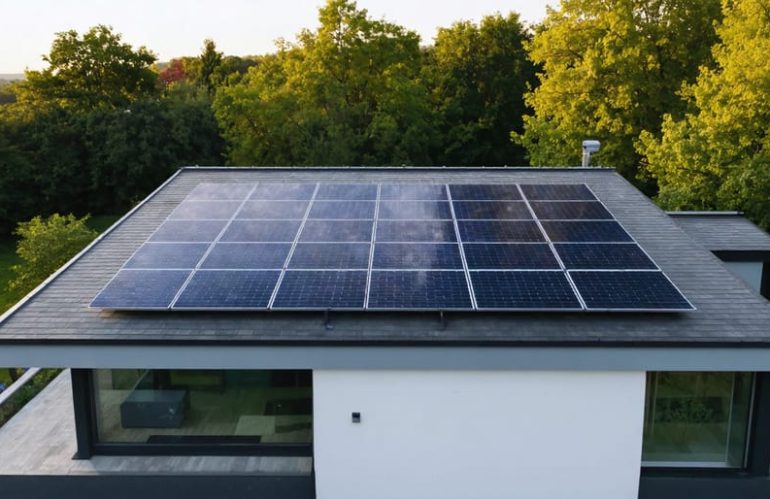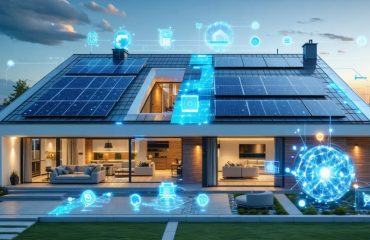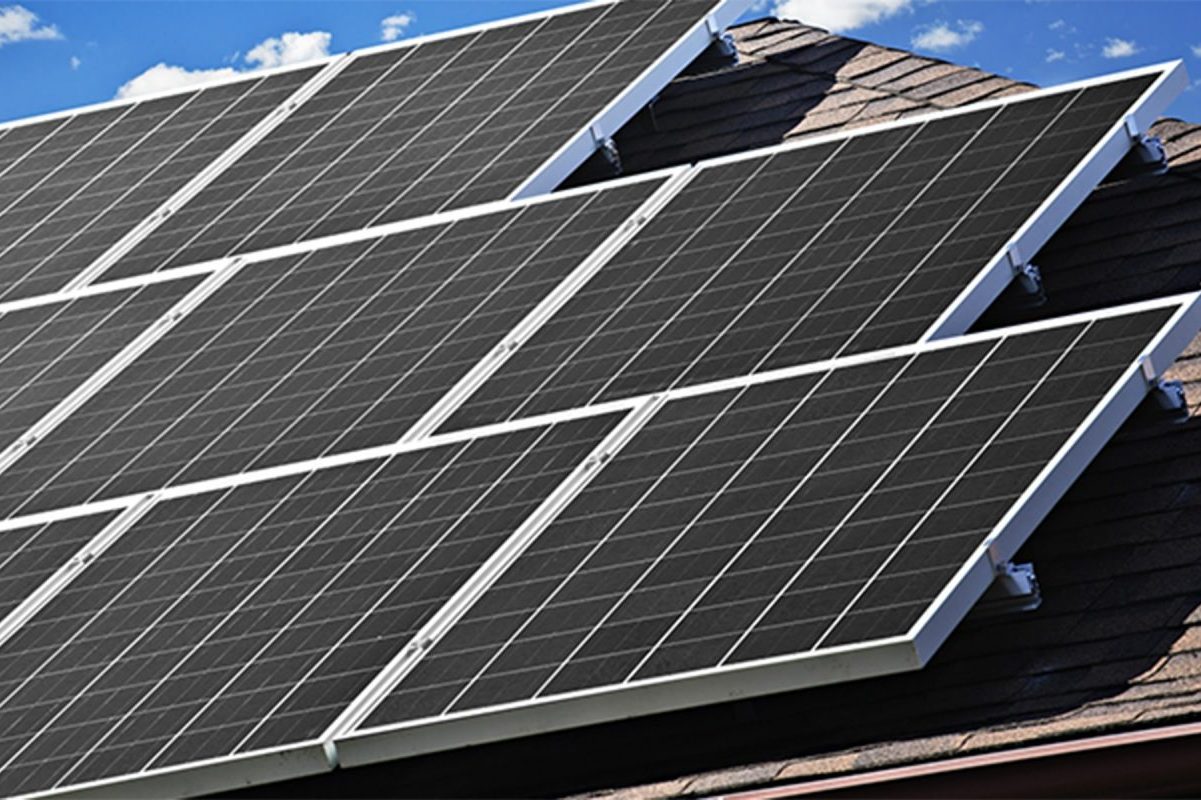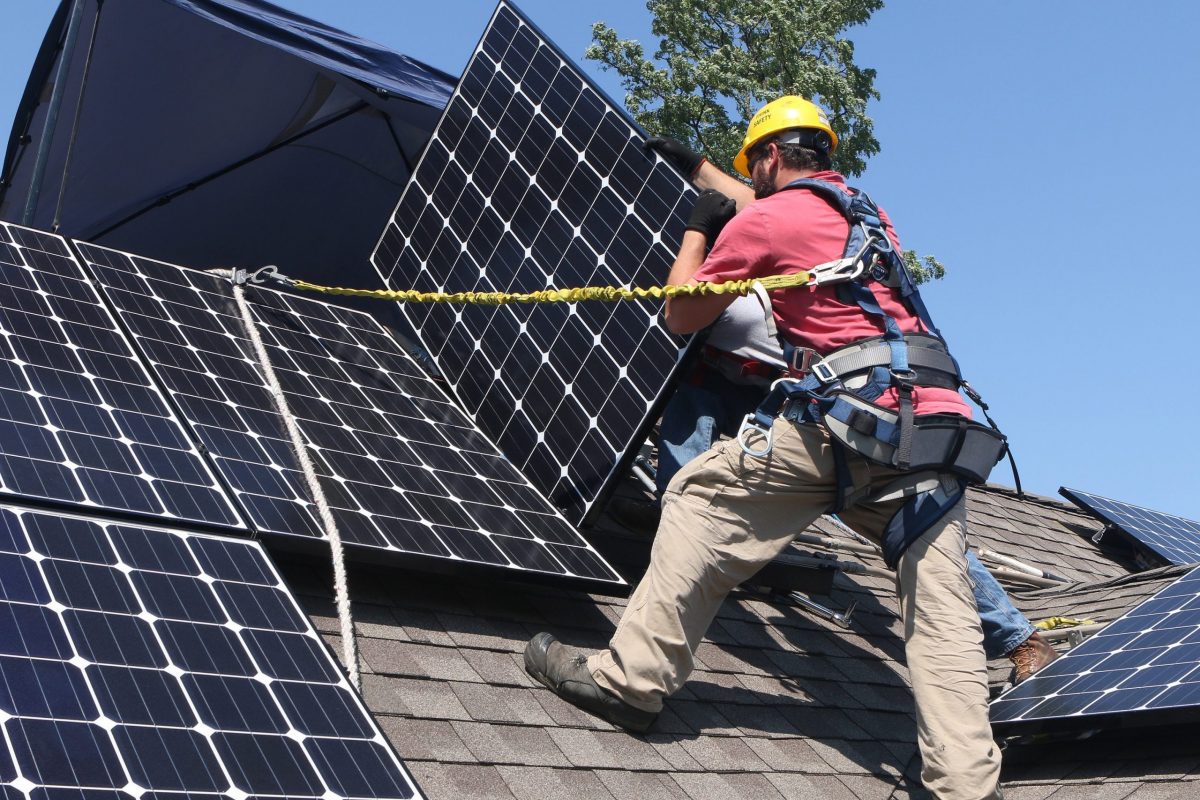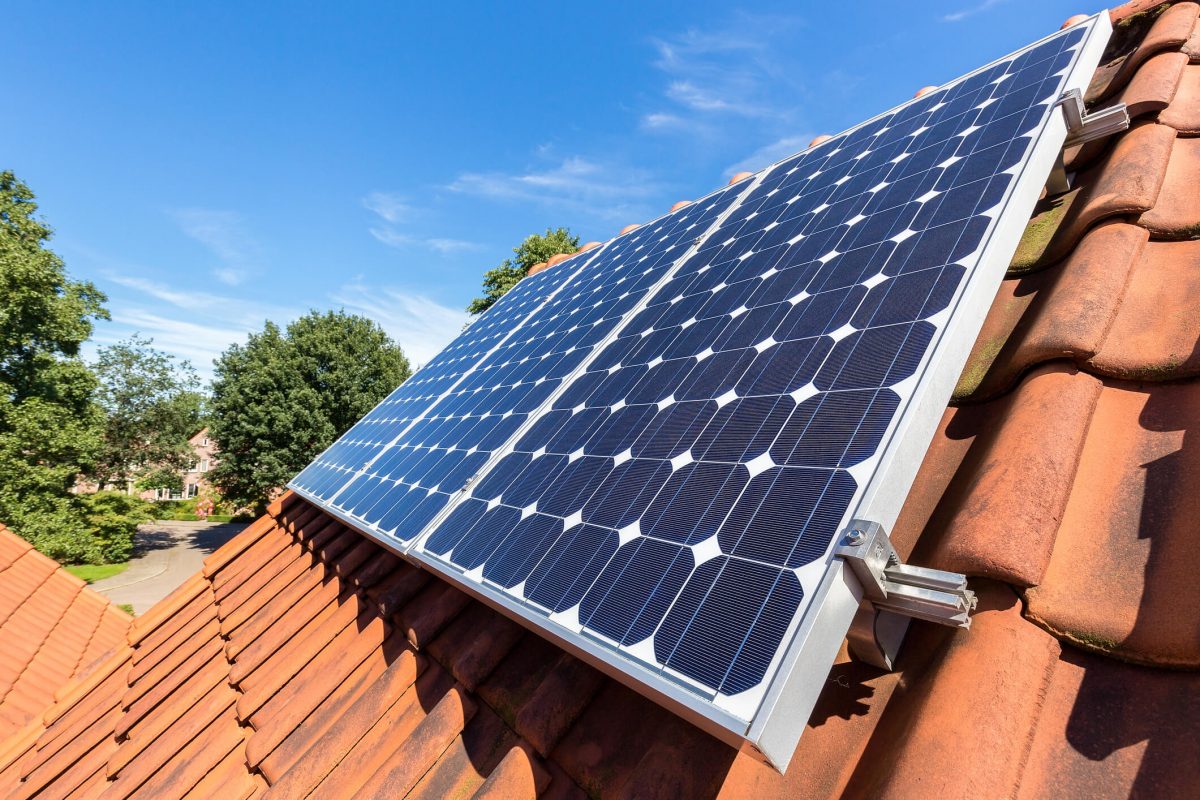Understanding your home’s transition zone is crucial for maximizing solar panel efficiency and reducing energy costs. Recent solar energy breakthroughs have revealed that this often-overlooked area between your roof and living space plays a vital role in your home’s energy performance. By effectively managing this zone—where temperature, airflow, and insulation interact—homeowners can boost their solar system’s output by up to 15% while creating more comfortable living conditions. Whether you’re planning a new solar installation or optimizing an existing setup, the transition zone represents a key opportunity to enhance your home’s energy efficiency and maximize your return on investment. This guide will help you understand how to harness this critical space to create a more sustainable and cost-effective home energy system.
What is an Energy Transition Zone?
Physical vs. Energy Transition Zones
When we talk about transition zones, it’s important to understand the difference between physical boundaries and energy system boundaries in your home. Physical transition zones are tangible areas where two different spaces meet, like the area between your garage and living room or your sunroom and main house. These zones often have distinct temperature and comfort characteristics.
Energy transition zones, on the other hand, focus on how energy flows between different areas of your home. These invisible boundaries play a crucial role in your home’s overall energy efficiency. For example, the space where your well-insulated living room meets a less-insulated sunroom creates an energy transition zone that affects heating and cooling performance.
Understanding both types of transition zones helps you make better decisions about your home’s energy systems. While physical zones might require structural solutions like better doors or windows, energy transition zones often need careful consideration of insulation, air sealing, and temperature control systems. By addressing both aspects, you can create a more comfortable and energy-efficient living space while maximizing the benefits of your home’s solar energy system.
Key Components of Your Home’s Transition Zone
Your home’s transition zone contains several vital components that work together to ensure smooth integration with the power grid. The main electrical panel serves as the central hub, directing power flow between your solar system and your home’s circuits. This is where your solar-generated electricity meets your household’s power needs.
The utility meter, typically mounted on your home’s exterior, is another crucial element. Modern smart meters can measure both incoming and outgoing electricity, essential for net metering programs that credit you for excess power production. Next to this, you’ll find the utility disconnect switch, allowing safe isolation of your home from the grid when necessary.
Your inverter system is perhaps the most important component, converting DC power from solar panels into usable AC electricity. This equipment often includes monitoring capabilities, letting you track energy production and consumption in real-time through smartphone apps or web portals.
Safety equipment forms another vital layer, including rapid shutdown devices and surge protectors. These components protect both your system and home from electrical irregularities. The grounding system ensures all metal components are properly bonded, providing an essential safety pathway for any stray electrical current.
Connection points between these components are carefully planned and installed according to local electrical codes, ensuring reliable operation and easy maintenance access. Understanding these elements helps you better manage your home’s energy transition and maintain system efficiency.
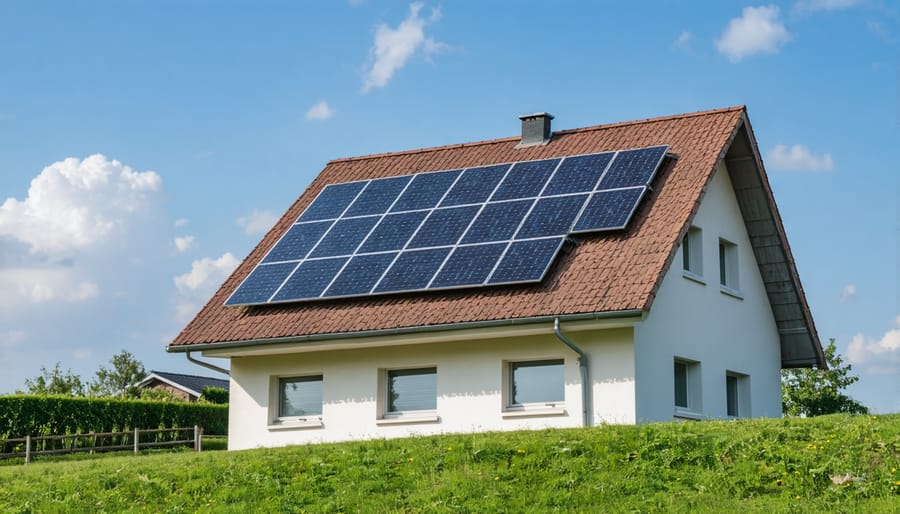
Why Your Home’s Transition Zone Matters
Grid Integration Benefits
A well-planned transition zone plays a crucial role in ensuring your home solar system connects seamlessly to the power grid. When deciding to install solar, proper integration can maximize both energy efficiency and cost savings. This connection point acts as a bridge between your solar panels and the utility grid, enabling smooth power flow in both directions.
The benefits of thoughtful transition zone planning include reduced energy loss, improved system reliability, and better voltage regulation. Your home can efficiently export excess power to the grid during peak production hours and draw electricity when needed, all while maintaining stable power quality. This two-way functionality ensures you get the most value from your solar investment.
Modern transition zones also include smart monitoring systems that help track energy flow and automatically adjust to changing conditions. This intelligent management prevents technical issues like power surges and ensures your home maintains consistent power supply, regardless of weather conditions or time of day. The result is a more reliable and efficient solar system that maximizes your energy independence while maintaining grid stability.
Energy Storage Optimization
Transition zones play a crucial role in modern energy storage systems, particularly for homeowners investing in battery backup solutions. As we progress toward a clean energy transition, these zones help manage power flow between your solar panels, battery storage, and the grid more efficiently.
Think of transition zones as smart energy traffic controllers. They ensure smooth power delivery during peak usage times and help prevent energy waste during off-peak hours. For homeowners with battery systems, these zones optimize charging cycles, extending battery life and maximizing stored energy usage when electricity rates are highest.
The real benefit comes during power outages. Transition zones enable seamless switching between grid power and stored energy, ensuring your lights stay on without interruption. They also protect your batteries from overcharging and help maintain optimal temperature conditions, which is essential for long-term battery performance.
By properly utilizing transition zones in your home energy system, you can reduce electricity costs while ensuring reliable backup power when you need it most.
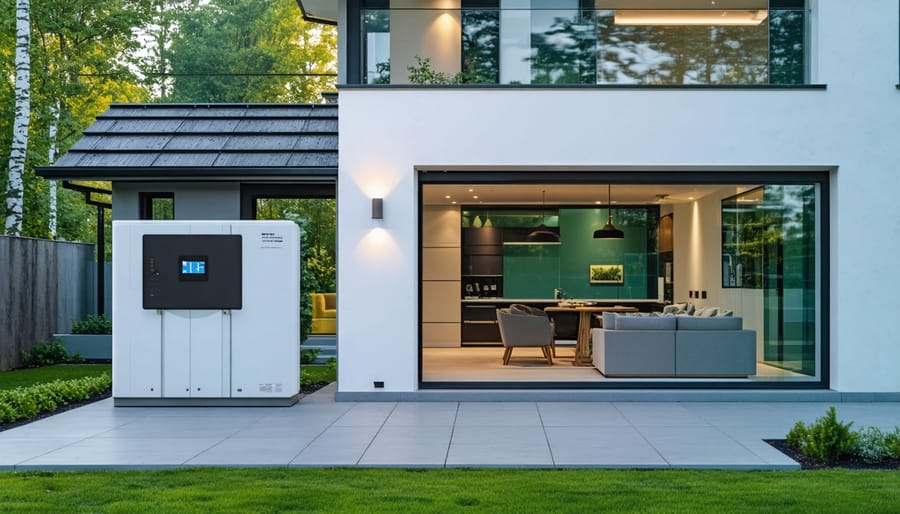
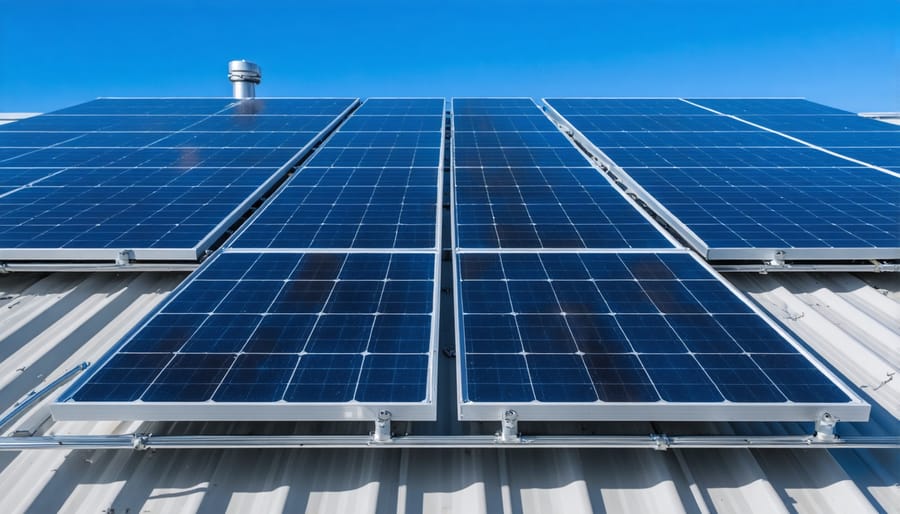
Preparing Your Home’s Transition Zone
Preparing your home for optimal solar performance in a transition zone starts with a thorough evaluation of your property’s unique characteristics. Begin by assessing your roof’s orientation and angle – south-facing roofs typically offer the best solar potential. Take note of any trees, buildings, or structures that might cast shadows on your panels throughout different seasons.
Next, evaluate your home’s insulation and energy efficiency. In transition zones, where temperatures can fluctuate significantly, proper insulation helps maintain consistent indoor temperatures and reduces the overall energy load your solar system needs to handle. Check your windows, doors, and attic for air leaks and consider upgrading to energy-efficient alternatives if needed.
Monitor your energy consumption patterns throughout the year. Keep detailed records of your electricity usage during both peak summer and winter months. This information helps determine the optimal size for your solar system and identifies opportunities for energy conservation.
Consider implementing smart home technologies that can automatically adjust your energy usage based on solar production. Smart thermostats, for instance, can help maximize the use of solar power during peak production hours while minimizing grid dependence during less productive periods.
Don’t forget to review local building codes and homeowners’ association regulations regarding solar installations. Many areas in transition zones have specific requirements for panel placement and system specifications. It’s also worth investigating local incentives and tax credits available for solar installations in your area.
Finally, consult with qualified solar professionals who have experience with installations in transition zones. They can provide tailored recommendations based on your specific location and help design a system that performs optimally year-round.
Understanding your home’s transition zone is crucial for maximizing energy efficiency and solar potential. By implementing the strategies discussed, you can create a more comfortable living space while reducing energy costs. Start by conducting a home energy audit, then prioritize improvements based on your findings. Remember that even small changes in your transition zone management can lead to significant savings over time. Take action today to transform your home into a more sustainable and energy-efficient space.

